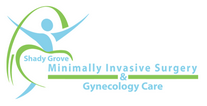Uterine Fibroids: Everything You Need to Know
Women are phenomenal beings. They care for the well-being of their families unconditionally and rarely complain when they are in pain. And women deal with a lot of silent pain. About 20% to 80% of women develop fibroids by the time they’re 50 years old. It is common for most women to develop them in their 40s or early 50s. Fibroids can be painful, but not all women who have fibroids have symptoms. This article will help bring awareness to fibroids by detailing everything you need to know.
What are Fibroids?
Fibroids (or leiomyoma or myoma), as termed by some doctors, are muscular tumors that grow in the wall of the uterus. They can be a single tumor growing in the uterus or many of them at one time. They can be as small a tiny seed or as large as a grapefruit. Most cases are non-cancerous or benign.
There is no specific identifier to what causes fibroids, and for this reason, there is no known cause for why they grow or shrink. They are known to be controlled by hormones — estrogen and progesterone. They tend to grow quickly during pregnancy when hormone levels are high. They tend to shrink with menopause.
Factors That Increase Fibroids
Some factors that can increase a women’s risk of developing fibroids are:
- Their age — As women get older (the 40s and 50s), the risk of fibroids increases. Fibroids usually shrink after a woman has gone through menopause.
- Family History — If fibroids are prevalent in the family, there’s a greater risk of developing them.
- Ethnic Origin — Fibroids are more prevalent in African American women.
- Obesity — The more overweight a woman is, the more at risk she is of developing fibroids.
- Eating habits — A high consumption of red meat and pork is linked to a higher risk of fibroids.
Why Do Women Need to Know About Fibroids
Symptoms do not always accompany fibroids. However, pain is a symptom that some women have, and it can be hard to live with. That pain can also be accompanied by heavy menstrual bleeding. Fibroids can also put pressure on the bladder or rectum. That will cause frequent urination or rectal pressure. While some fibroids are incredibly small, some can be so large that they can cause a woman to look pregnant. Some common known symptoms of fibroids include:
- Lower back pain;
- Enlarged lower abdomen;
- Pain during sex;
- Heavy bleeding that can cause anemia or painful menstrual cycles;
- Feeling full in the lower stomach area;
- Frequent urination;
- Complications during pregnancy and labor that could lead to a cesarean section;
- Reproductive problems like infertility.
.
Fibroids and Their Association to Cancer
Less than one in 1,000 fibroid cases turn into cancer called leiomyosarcoma. However, most doctors feel this cancer does not arise from an existing fibroid. Having fibroids does not signify a risk of any cancer — in the fibroids, uterus or otherwise.
Knowing if You Have Fibroids
A fibroids diagnosis can come from a routine or regular pelvic or GYN exam. There are additional tests that can be run to confirm this diagnosis that includes: Ultrasound, Magnetic resonance imagine (MRI), X-rays, Cat scan (CT), Hysterosalpingogram (HSG) or sonohysterogram. There are also two types of surgery that help to prove the diagnosis of a fibroid:
- In a laparoscopy procedure, a tiny incision is administered near the navel and the doctor uses a scope to get a good view of the uterus.
- A hysteroscopy is an incision-free procedure where the scope passes through the vagina and cervix into the uterus. From this, the doctor can get a good view of the uterus for fibroids.
Treating Uterine Fibroids
Not all fibroids need treatment because not all women have symptoms. For women with symptoms, treatment options may vary based on the symptoms being treated. Since there’s no one treatment option for all, treatment could range from various medications to some form of surgery. Even with medication, fibroids may not go away. However, they may shrink over time.
Preventing Uterine Fibroids
It may not be possible to prevent the development of fibroids. But there are some things that can be done to lessen the risk of developing them. That includes making healthy lifestyle choices, like eating less red meat and pork, and consuming more vegetables and fruits and maintaining a healthy weight to avoid obesity.
If you feel you could be at risk of fibroids or are experiencing symptoms, you want an experienced gynecologist to provide you with a thorough exam to know if there is a need for concern. Dr. Shabnam Dadgar is that specialist, and she is an expert in the diagnosis and management of fibrosis. Contact Shady Grove Gyn Care today to schedule your appointment with Dr. Dadgar..

